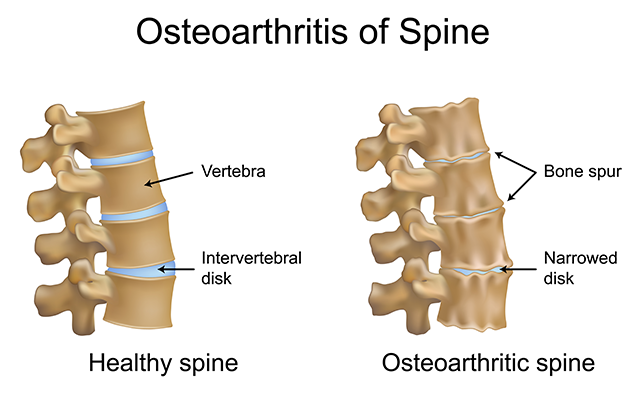
As we age, our bodies undergo natural changes that affect almost every system, including the spine. Many people experience stiffness, reduced flexibility, and occasional back pain as they get older. Understanding how aging impacts your spine is key to maintaining mobility, preventing injury, and enjoying a healthy, active lifestyle.
In this article, we’ll explore the common age-related changes in the spine, how these changes can lead to back pain and reduced function, and what you can do to keep your spine strong and healthy well into your later years.
The spine is a complex structure of bones, discs, ligaments, and muscles that work together to provide support, flexibility, and movement. Over time, normal wear and tear can lead to degenerative changes. The spinal discs, which act as cushions between vertebrae, lose water content and become thinner. This reduces their ability to absorb shock and can contribute to stiffness and discomfort.

Aging is also associated with a gradual decline in bone density, a condition known as osteoporosis. Weakened vertebrae are more prone to compression fractures, which can alter the spine’s alignment and cause pain or a hunched posture.
The facet joints, which connect vertebrae and allow movement, may develop arthritis over time. Osteoarthritis of the spine can lead to stiffness, inflammation, and reduced range of motion. Bone spurs may also form, contributing to nerve compression and discomfort.
Lower back pain is one of the most common complaints among older adults. It can result from disc degeneration, muscle weakness, or arthritis. Chronic lower back pain may limit mobility and reduce quality of life if left unmanaged.
Spinal stenosis occurs when the spinal canal narrows, putting pressure on the spinal cord or nerves. Symptoms often include pain, numbness, or weakness in the legs, especially when walking or standing for extended periods.
Although more common in younger adults, herniated or bulging discs can occur in older adults as the discs lose water and elasticity. These can press on nerves, causing pain, tingling, or numbness.
Age-related changes in the spine and surrounding muscles often lead to a forward-leaning posture. Kyphosis, or an exaggerated curvature of the upper back, can reduce height, cause discomfort, and affect balance.
Years of slouching at desks, bending improperly, or carrying heavy loads can accelerate spinal degeneration. Maintaining good posture reduces stress on discs and joints, preserving spinal health over time.
A sedentary lifestyle contributes to weaker muscles, reduced flexibility, and increased risk of spinal injuries. Strong core and back muscles support the spine and help prevent pain as you age.
Adequate intake of calcium, vitamin D, and protein is essential for maintaining bone strength and preventing osteoporosis. A nutrient-rich diet supports spinal health and overall mobility.
Excess body weight puts additional strain on the spine, increasing the risk of disc degeneration, arthritis, and back pain. Maintaining a healthy weight helps reduce stress on spinal structures.
Regular physical activity strengthens the muscles that support the spine, improves flexibility, and reduces stiffness. Effective exercises include:
Pay attention to posture when sitting, standing, and lifting objects. Ergonomic chairs, lumbar support cushions, and proper lifting techniques can significantly reduce strain on the spine.
Avoid prolonged sitting or lying down. Take frequent breaks to stand, stretch, or walk, which keeps the spine mobile and reduces stiffness.
Support your bones with calcium and vitamin D-rich foods like dairy, leafy greens, and fortified products. In some cases, doctors may recommend supplements to prevent osteoporosis or support joint health.
Maintaining a healthy weight reduces pressure on the spine, decreasing the risk of degeneration and back pain. Even modest weight loss can relieve spinal stress and improve mobility.
Routine visits to a healthcare provider or spine specialist help monitor spinal health. Early detection of issues like osteoporosis or arthritis can prevent serious complications and allow for timely treatment.
Physical therapy focuses on strengthening muscles, improving flexibility, and correcting posture. It is often a first-line treatment for chronic back pain and age-related spinal issues.
Over-the-counter anti-inflammatory drugs (NSAIDs) and pain relievers can help manage discomfort. In some cases, doctors may prescribe muscle relaxants or other medications for severe symptoms.
For conditions like herniated discs or spinal stenosis, minimally invasive procedures such as steroid injections can relieve inflammation and pain without major surgery.
Surgery may be necessary in severe cases where conservative treatments fail. Procedures can include spinal fusion, laminectomy, or disc replacement, depending on the condition.
Aging doesn’t have to mean a decline in spinal health or quality of life. By staying active, maintaining proper posture, eating a balanced diet, and seeking medical care when necessary, you can reduce age-related spine problems and enjoy greater mobility.
Remember, your spine supports your entire body — taking proactive steps today can prevent pain and preserve your independence for years to come.
The aging process naturally affects the spine, but lifestyle choices play a critical role in how significant these changes are. From bone density loss to disc degeneration and postural shifts, understanding these changes empowers you to take control of your spinal health.
Incorporating regular exercise, proper nutrition, weight management, and good posture habits can prevent pain and support a healthy spine well into older age. A strong, flexible spine not only reduces discomfort but also helps you maintain mobility, balance, and an active lifestyle.